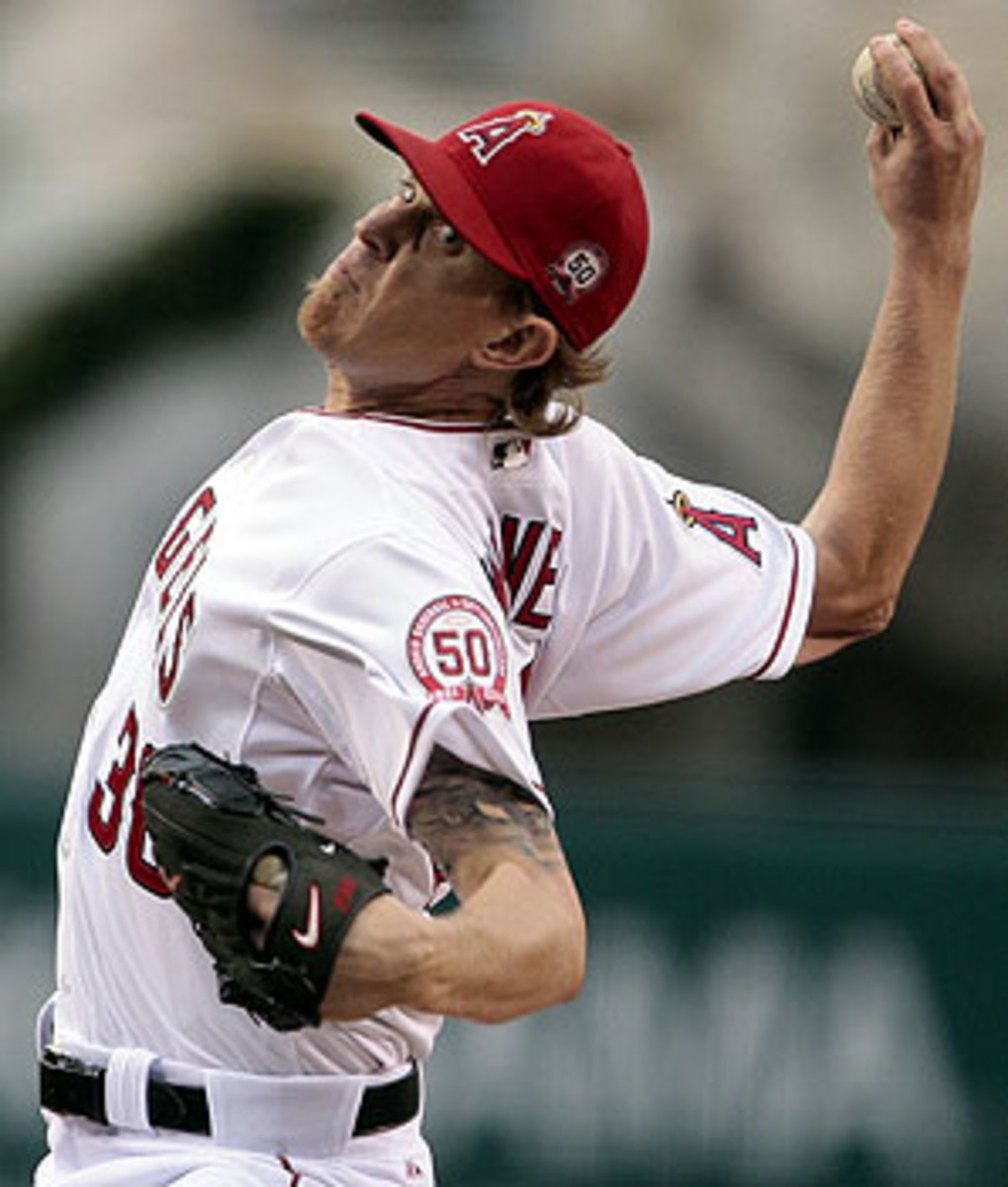'Smoke and mirrors' not only reason for Weaver's rise in K's
The 2010 American League strikeout champion is just one strikeout short of leading the league in punchouts again. Yet Jered Weaver may have one odd profile for a strikeout king. He throws his fastball at only about 90 mph, he pitches with a delivery that might make an orthopedist cringe, he has the disadvantage of self-described "pipe cleaner legs," and he wasn't a true strikeout pitcher until his fifth season in the majors.
What to make of Weaver is about as difficult as making sense of his season so far. After an April in which he was 6-0 with a 0.99 ERA and was the talk of baseball, he is 0-3 with a 5.50 ERA in May heading into his start tomorrow night.
As the Los Angeles Angels righthander strikes out more batters, are we looking at the making of an ace, similar to how pitchers such as Cliff Lee, Roy Halladay and Chris Carpenter grew into such a role? Or is Weaver destined to be on that level just below an ace? And if the great free agent class after the 2012 season really does materialize, whom would you pick from among Weaver, Cole Hamels, Matt Cain, Zack Greinke and John Danks?
The answers may have something to do with Weaver's rate of strikeouts. After four seasons in the big leagues and 110 starts, Weaver averaged 7.3 strikeouts per nine innings. Last season, however, he jumped to 9.3 K/9 and won the strikeout title by one over Felix Hernandez, getting four strikeouts in his last start. This season he has nearly maintained that rate (8.6). What happened?
"Smoke and mirrors," he said with a laugh when I asked him to explain the increase. "It's not something I really set out to do. It's something you learn over time, and I've had some good ones to learn from: [Bartolo] Colon, [Kelvim] Escobar, [John] Lackey, [Joel] Piniero, [Dan] Haren . . . You try to learn something year to year.
"If there's one thing that's helped me is just being able to throw my offspeed stuff in fastball counts. To be able to throw my curveball or changeup, say in a 2-and-1 count, and get it over to get back into a count is a big plus."
If Weaver continues with such a strikeout rate, he will continue to accrue merit badges toward his graduation to true ace. To do so, he will have to overcome the perceived disadvantages of his frame and pitching style.
At 6-foot-7 and 215 pounds, Weaver is not your prototypical power pitcher. "My pipe cleaner legs?" he said. "I'm not trying to get big and bulky. I try to stay long and lanky, free and easy. I do a lot of cardio in the offseason -- anything: long distance running, running lines on the basketball court, anything cardio."
What he lacks in power he makes up with deception. Weaver throws cross-fire style, keeping a closed front side before slinging the ball essentially over his front leg. It's not the style anyone would coach, but it works for Weaver because that's the way his body naturally wants to work. Said Weaver, "It's all natural. That's the way I've always thrown. If it helps to gain some deception by throwing across the body, I'll stick with it, but I didn't set out to try to do it that way."
Though Weaver doesn't throw especially hard, his fastball gets on top of hitters quickly because he hides the ball so well for so long with that slingshot style. But to be an ace, Weaver has to prove that such a style holds up deep into seasons and year after year. Weaver has a much worse career second-half ERA (3.81) than in the first half (3.18), though last year he was better in the second half (2.79 after a 3.20 start), and he is a durable pitcher who has increased his innings every season in the big leagues.
In many ways, Weaver is much like Hamels, his fellow lanky Southern Californian who has had an eerily similar career. If you needed an ace after next season, would you sign Weaver or Hamels? Or would you prefer Cain, who has the more traditional body type to last through his early 30s, Greinke, or Danks? Take a look at how the potential 2012 free agents compare:
Some of those potential free agents might sign extensions in the interim that postpone their free-agent eligibility. Weaver, a Scott Boras client, lost his arbitration case this year and is paid $7.365 million. He could double that salary next season, his final arbitration season before he could hit free agency at 30. (The Angels did explore a long-term solution with Weaver, but the talks went nowhere.)
The elite free agent starter choices this winter seem limited to C.J. Wilson and, if he exercises his opt-out, CC Sabathia, who could command Cliff Lee money. Weaver could become one of those rare top pitchers who actually gets on the open market in his prime. These next two seasons will define just how high his earning power goes.
In the meantime, with increased strikeouts has come increased exposure. Weaver, for instance, recently signed on to his first national endorsement contract, pitching SoBe drinks, including the literal pitching of Fuji apples to promote a new flavor. "Comes out like a knuckleball," he said of the apple-chucking. The commercial endeavor, not to mention all those strikeouts, threaten to blow his cover as a lanky pitcher with pipe cleaner legs who can walk the streets of major league cities with few people recognizing the strikeout champion.
"I'll let those other guys deal with that," he said, referring to recognizable aces. "I like to eat my lunch in peace."






